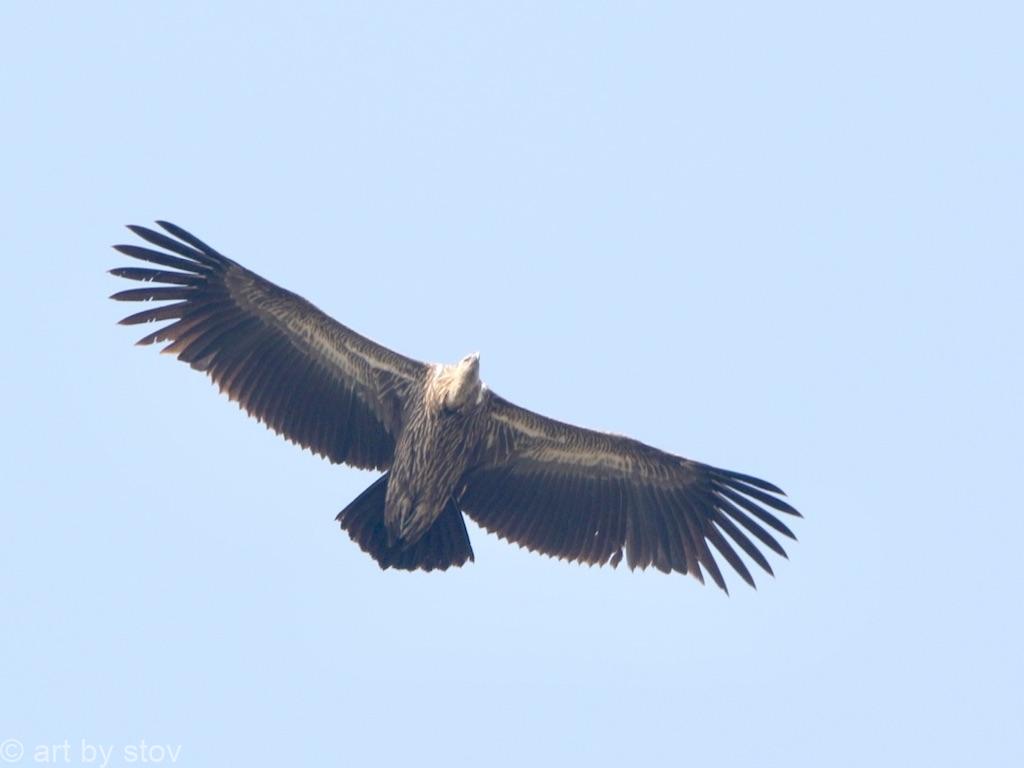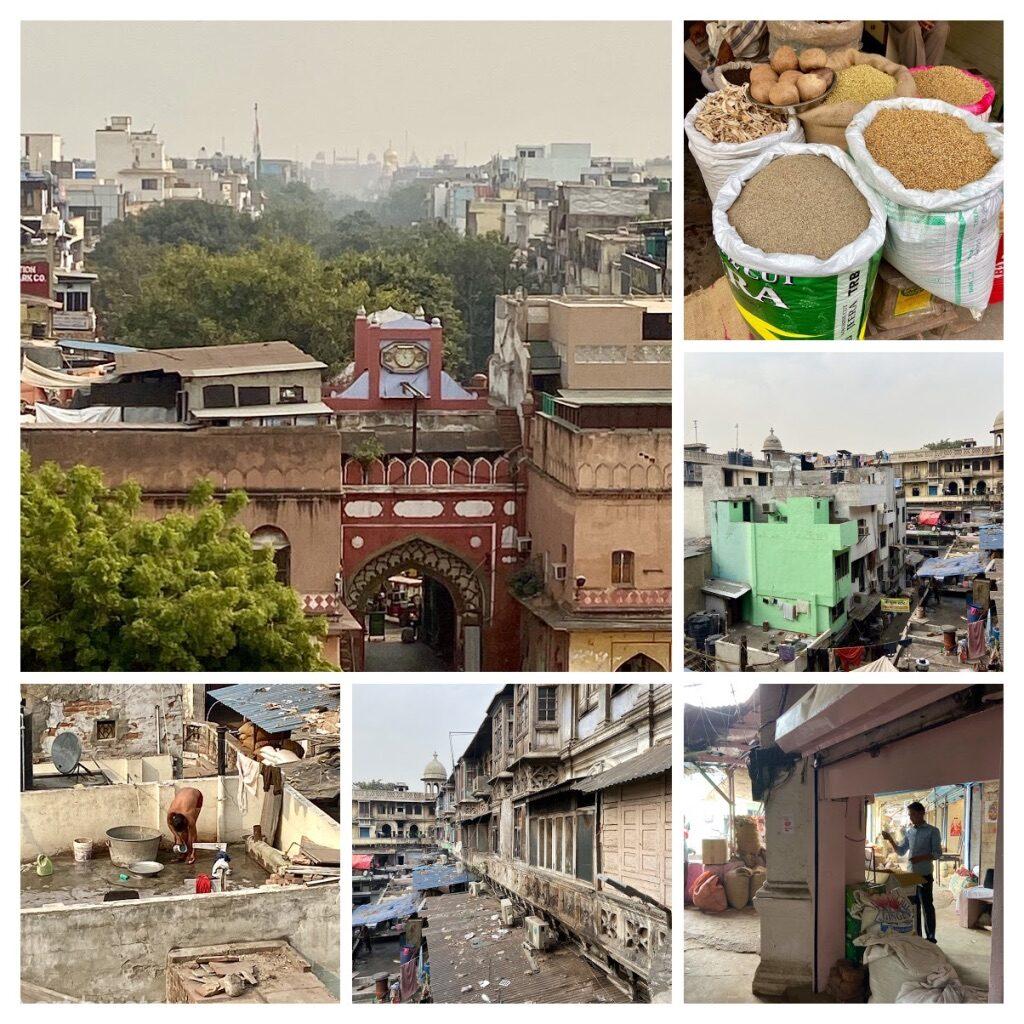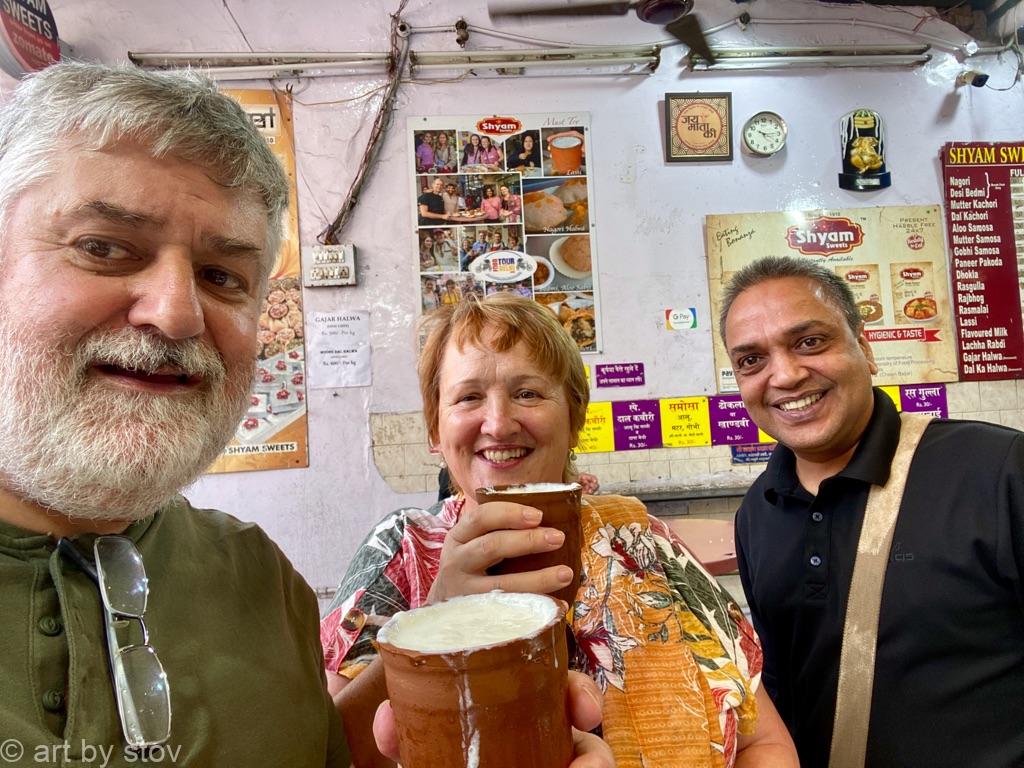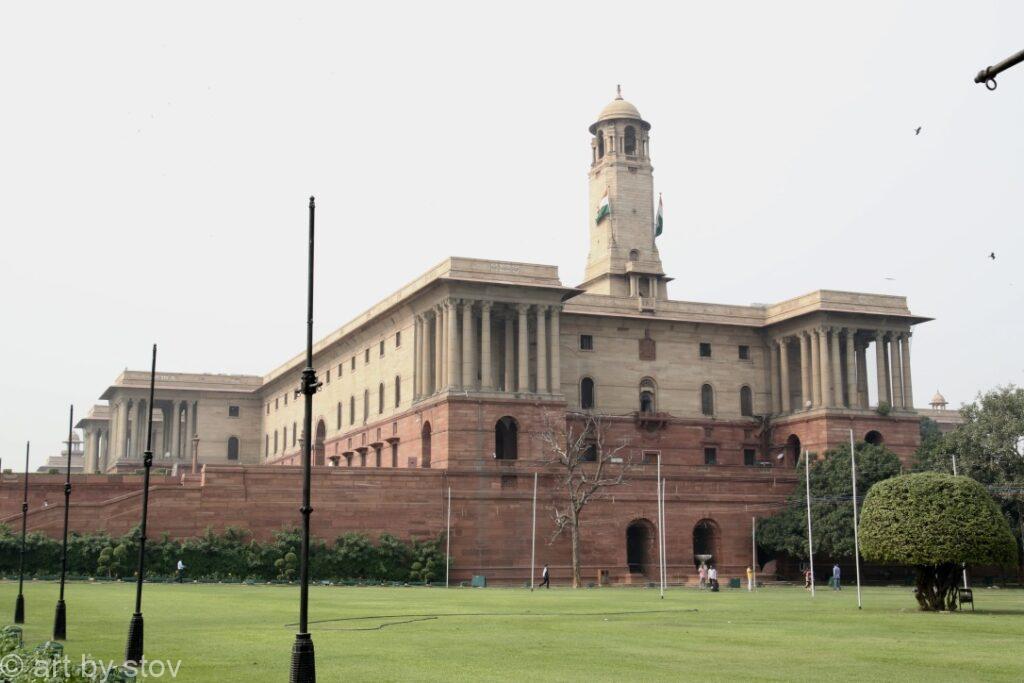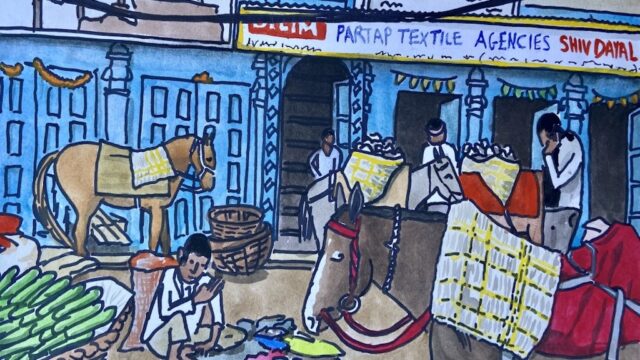
Blog 16. In search of Mughal Delhi, flying with pigeons and kites and the last home of a spiritual and political leader
Day 14 – Wednesday 27th November 2019 – Delhi
“it’s towers are the resting place of the sun” wrote Chandar Bhan Brahman in 1648. It is like a garden of Eden that is populated” wrote Ghulam Mohammed Khan. For all the Old City’s considerable charm, it was impossible to reconcile the earthly paradise praised by the poets with the melancholy slum that today squatted within the crumbling Mughal walls. The greatest disappointment was Chandni Chowk, the Moonlight Bazaar which was praised for its wide avenues and fabulous Mughal Gardens. Instead you sit stranded in a traffic jam, half-choked by rickshaw fumes and the ammonia stink of the municipal urinals, you see around you a sad vista of collapsing shop fronts and broken balustrades, tatty warehouses roofed with corrugated iron and patched with rusting duckboards. The canal which ran down the centre of the bazaar has been filled in; the trees have been uprooted. All is tarnished, fraying at the edges.
This partial copy of an extract from William Dalrymple’s excellent “The City Of Djinns – A Year In Delhi”. I couldn’t have written it better so apologies for the plagiarism.
And to this garden delights we are headed this morning. We leave early to avoid the traffic and masses of people.

We were up at 06:00 as we needed to catch the metro to Chawri Bazaar to meet a private guide for a tour around Old Delhi. After a hybrid breakfast of crispy bacon, choley (hot spicy chickpeas) and naan bread we route marched from The Claridges to the metro. We had no idea how frequently the trains ran and how long the journey took let alone how to purchase tickets; we left early. The ticket machine was simple to use and multilingual. The tickets cost IRS 20 each, IRS 40 for 2 that is less than 50P. After paying our fee a little blue token fell from the machine. We walked across to the turnstile, tapped the token and walked through. There was bag scanning.
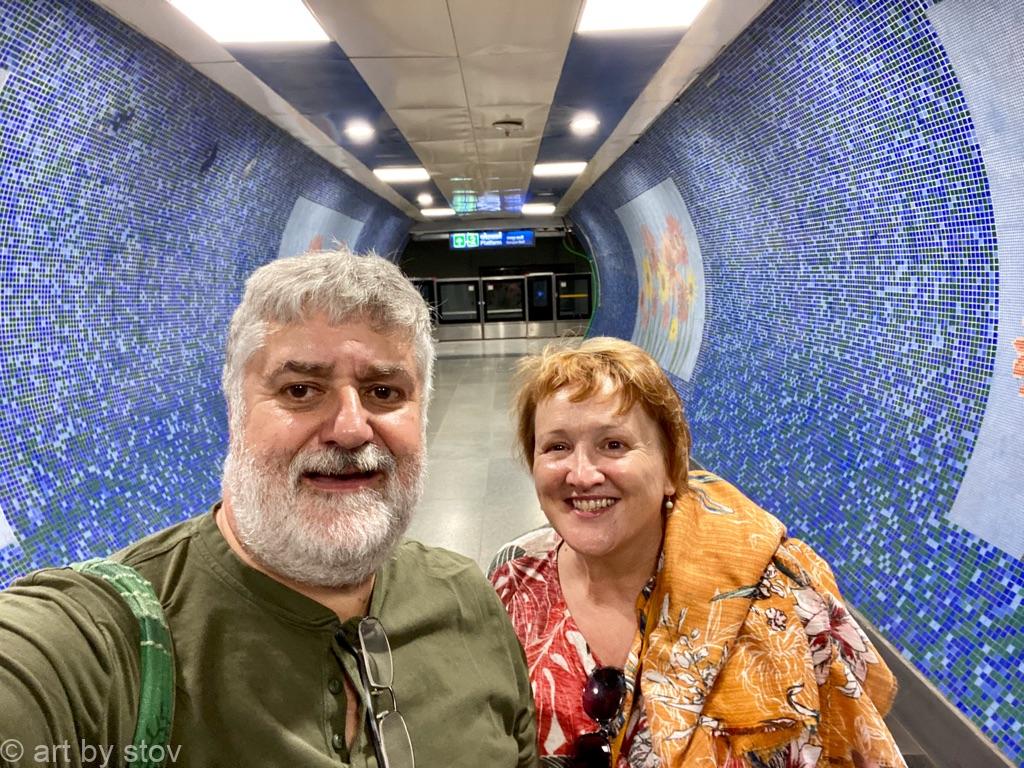
The station was exceptionally clean, spacious and very modern. The platforms were easily reached, the trains were frequent, capacious and clean. The ever lovely declined to join the ladies in the ladies only carriage. All was going well….until watching the lights on the map plotting our journey I noticed we were headed in the wrong direction. This was really embarrassing as we were the only foreigners on the train and already the centre of attention.
When we came up for air at Chawri Bazaar station we were thrust directly into the real thing. Bustling, dirty, exciting Old Delhi proper.
We had both decided that we wanted to do a non touristy walking tour of Shahjahanbad. We had asked James Farrell of Sundowners for recommendations but the firm he came up with sounded too commercial and wanted over £100 pounds for a two hour tour. Through Trip Advisor and their Viator link we found Mystic Heritage Walks. This is a one man business and Vivian John Bailey, for that is his name, is a Christian born in Old Delhi. The son of a doctor. He has been doing the tours for about 13 years now having previously been an air steward. The cost for 3 hours plus was c£15.00 each.
Had we paid our money for no purpose we wondered as we stood alone amid the early morning rush and bustle? Bang on time a smiling individual bounced up to us and announced himself as Vivian. He gave us a quick run through of what he had planned for us and it sounded exactly what we wanted. At the Hauz Qazi Chowk intersection he gave us a quick overview of the old city and told us that as well as Old Delhi or Shahjahanabad it was also called Delhi 6; apparently the postcode is 110006. Vivian explained that in the Hindu parts of Old Delhi you do not say the traditional Namaste greeting but instead you say Ram Ram.
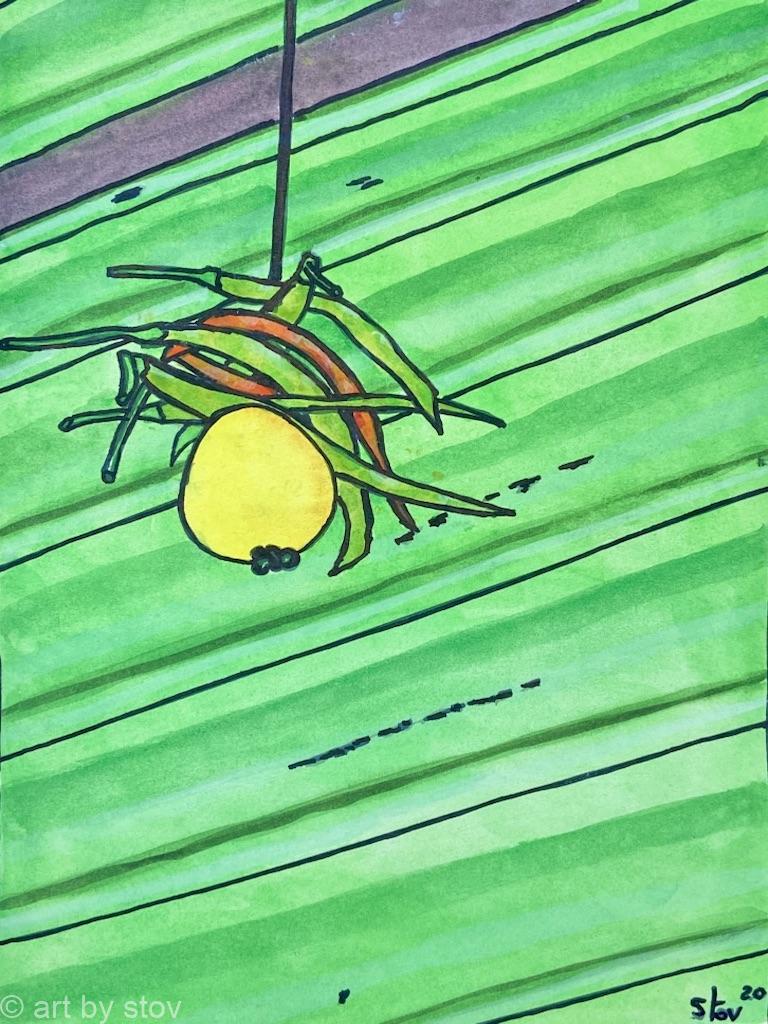
So off we went. Vivian stopped outside a closed shop and explained that the shops tend to stay open until late in the evening but open no earlier than 10-10;30. Outside this shuttered one he pointed to something hanging down. Those who have been with me since blog 1 will recall I posed a question. Here at last is the answer. Skewered on a piece of string was a lemon and seven chillies. This, he said, was to bring good luck to the shop. If a dark spot develops on the lemon it is a bad omen.
As we turned back to the street we saw the egg seller pass on his cycle rickshaw, a pyramid with 20 x 20 base of chicken eggs.
We then turned down a narrow alley, outside the closed shops were large 10 litre plastic containers all the same design but in various ages and colours. These, he explained were for water. There is no fresh water supply in the shops and they have these containers delivered daily, the quantity depending upon their need.
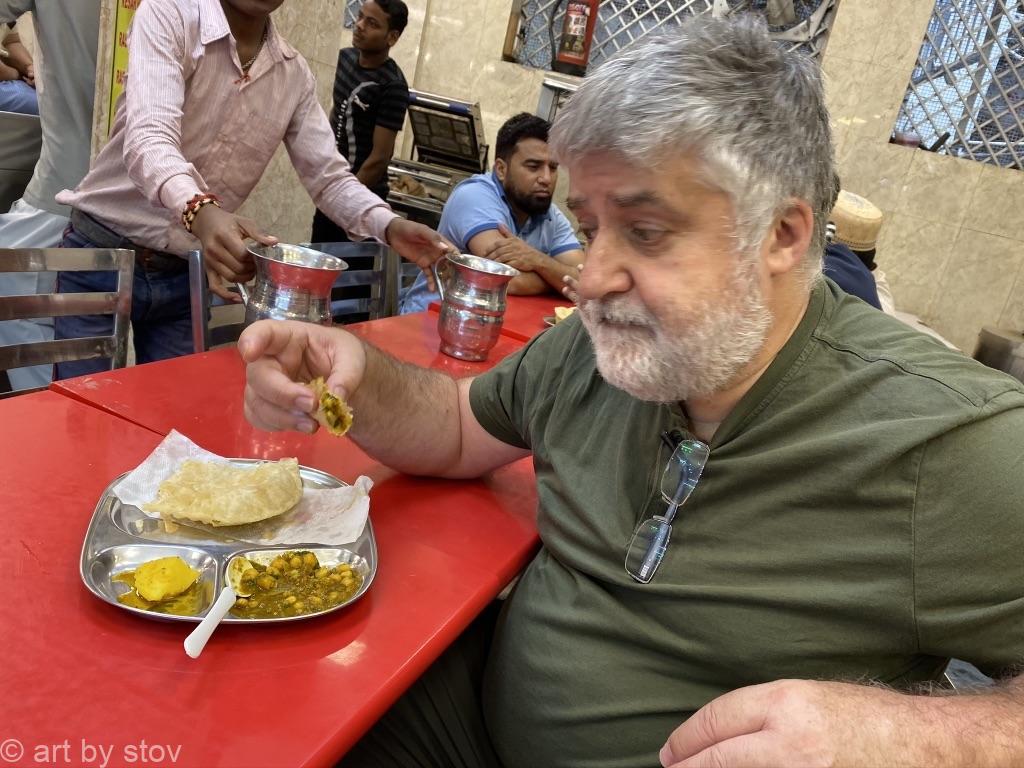
Vivian asked if we liked Indian street food and I said very much so. We called into a Dhaba, a restaurant with benches which was open to the street. Inside there was a lovely smell and a row of friendly faces smiling at the foreigners. The ever lovely declined the savoury on offer, a most delicious choley, with the freshest of puri and spicy potatoes. I devoured this using my right hand only like a true Indian and was offered more. We were then shown the array of sweets and a small tray was placed in front of us; they too were delicious. None of the shops have cooking facilities and therefore the shopkeepers obtained their chai and sustenance during the 12+ hour day from the Dhabas.
We were then told about the different religions in the old City, predominantly Hindu and Muslim, with a smattering of Christians and jews but few Sikhs; the Punjabis mostly live across the river (Yamuna).
Vivian told us “GOD stands for:
Generation = Lord Brahma, the creator
Operational = Vishnu he makes things happen
Destructor = Shiva aka Mahish aka Shankar destroys, but not in a negative sense”
We then were guided to the steps of the Choumakha Temple or mandir. Doffing our shoes we entered in stocking feet and Vivian explained the process of worship and the various deities whose statues or murtis lined the walls. Hindus believe In one god, the multitude we see represent the various manifestations of that god, Brahman. The faithful ring a bell when they enter to wake the god. They pray twice a day at least at what is called aarti.
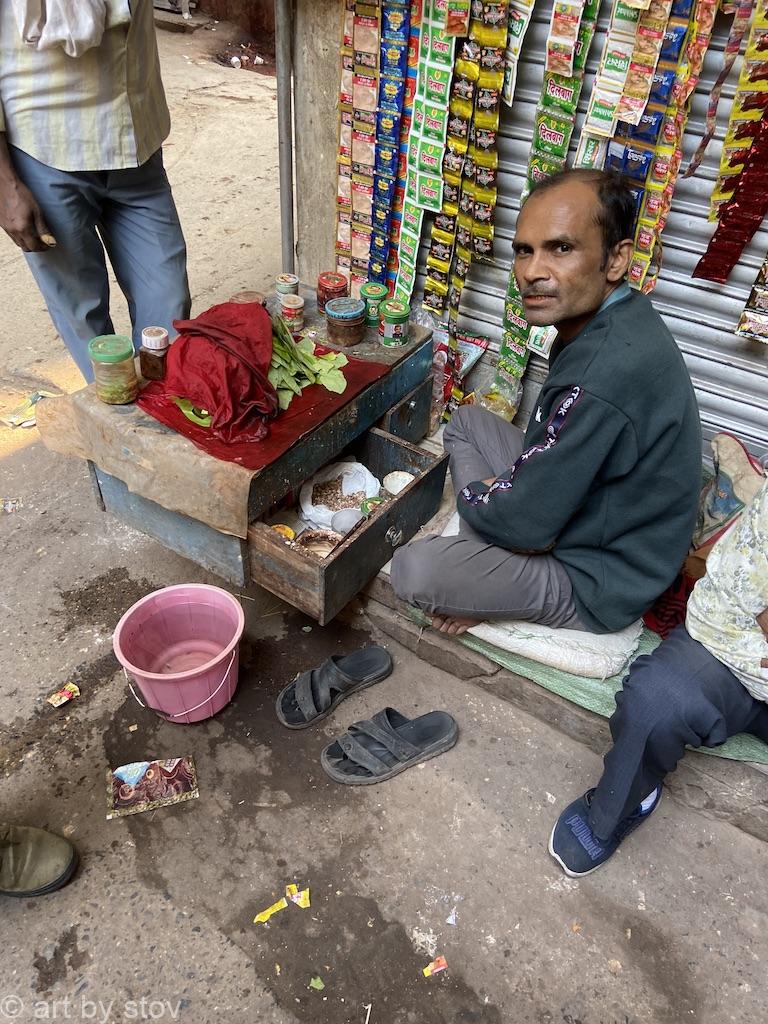
As we left the temple we turned left up an even narrower alley and then left again where sat on the corner was a paan seller. He sat at his low level table and prepared each portion to order. Paan is a preparation combining betel leaf with areca nut, and is widely consumed throughout Southeast Asia, East Asia (mainly Taiwan), and the Indian subcontinent. It is chewed for its stimulant and psychoactive effects. After chewing it is either spat out or swallowed. Paan has many variations. Slaked lime (chuna) paste is commonly added to bind the leaves. Some preparations in the Indian subcontinent include katha paste or mukhwas to freshen the breath. This guy had the works. I was asked if I wished to try it but I declined, still savouring the complex flavours of the excellent Choley and sweets.
Almost opposite the Paan seller was a courtyard which was almost completely taken up with a massive tree. Vivian explained that this tree, the Peepal tree, is considered highly sacred by Hindus. It is believed that Lord Brahma resides in the roots, Lord Vishnu in the Trunk and Lord Shiva in the leaves. These trees live a long time, some have been recorded at over 3,000 years old. This one had grown and grown up into and through the surrounding houses necessitating amendments to the old buildings as nature took over. See Blog 7 for the description of other sacred trees in Indian culture.
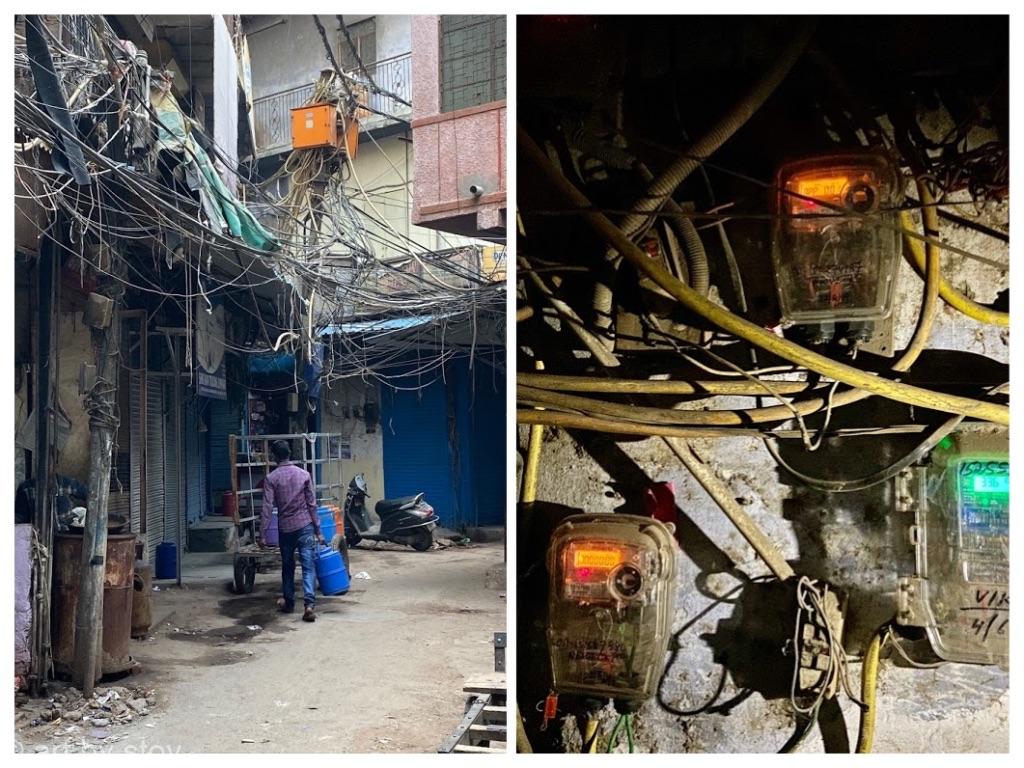
We continued along ever narrowing streets until Vivian stopped in a triangular area, almost a square where two streets merged into one. He asked us to wait while he went to check something. He crossed the square, pulled back the metal screen, like the type you get on lift doors, and then walked up into the dark, dark stairwell. We waited and waited. He was gone for over five minutes giving us time to take in the detail of our surroundings. There was evidence that many people lived here, for this was a residential not commercial area of the city. A couple of the locals were idly looking at us with enquiring eyes but we felt at peace.
The sound of footsteps across the way and there was Vivian waving for us to join him. It was pitch black inside. By the light of Vivian’s phone torch, we climbed one, two, three, four storeys up, then through a door into a house with an old lady preparing and cooking at a stove. Out onto a balcony and up yet more steps, now in the light to be greeted by three men. One held in his hand what looked like a short handled squash racket he was whistling. As we reached the topmost point a flock of pigeons flew past and round the building in a circle. As he whistled and waved his bat the pigeons flew faster, slower, further away or closer. Eventually he called the flock in and they landed with a massive swooshing of wings.
Vivian told us that the residents of the old City had two hobbies going back centuries in time, Pigeon flying and Kite flying. Those who flew kites tried to snap the strings of their rivals, often using string laced with ground glass. Those who flew pigeons tried to fly their flock into a rival’s, confusing the rival’s birds, some of whom joined the new flock. He went on to tell us that the birds fetched quite a price, many hundreds of thousands of rupees, he quoted one at 350,000 Rupees (IRS); that is nearly £4,500. The average Indian earns cIRS 120,000 per year. This experience was truly amazing and entirely unexpected.
We came back down to street level and Vivian guided us through a very narrow entrance, which had vertical iron bars to stop motorcyclists using the alley. I wondered whether it would even be possible, for a motorcycle to enter if there were no bars, let alone weave it’s way around the twisty walls of the narrow passageway. Vivian then went on to explain that in recent years the problem of electricity supply had been partly resolved in that each residence now had a meter, minute and basic by our western standards but it meant it was no longer possible to patch into another person’s live supply to feed your needs.
We followed the narrow alley and out into a lighter one. Directly opposite an old ruined havelli with the most beautiful decaying carvings. There are over 250 such examples of decaying splendour in the old City and it would cost too much to even save a few prime ones.
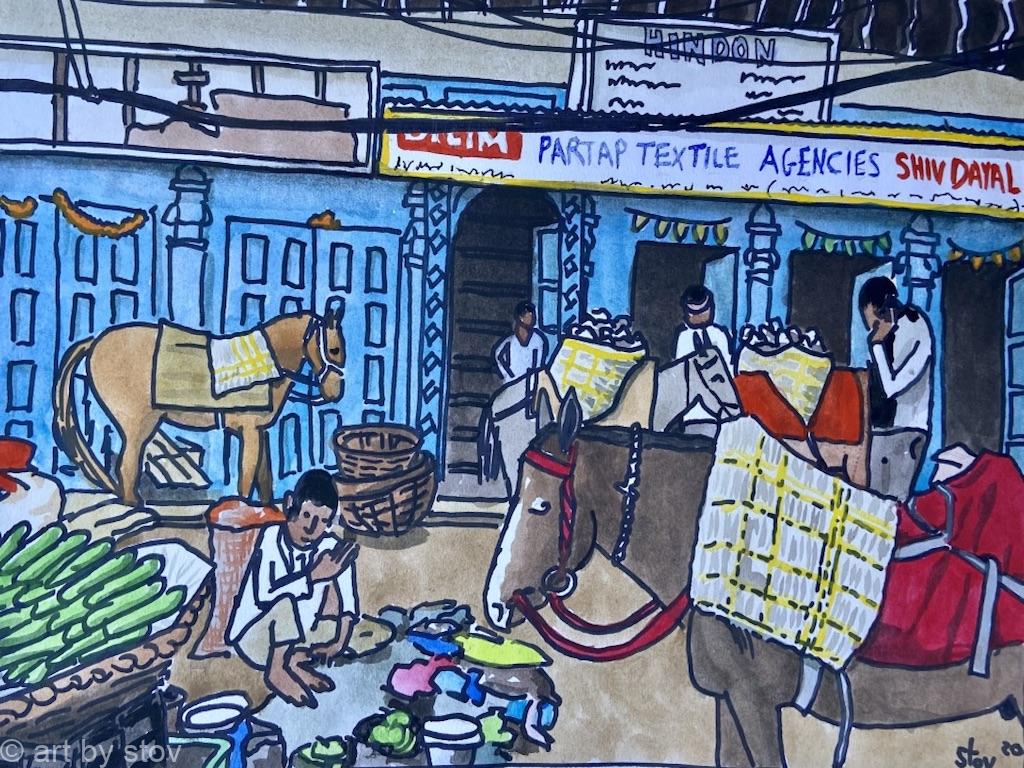
Another couple of twists and turns and we were out on a main drag which appeared to be a food market. All kinds of fruit and veg and nuts and grains and paan leaves and betel nuts everything under the sun, but no meat, no fish all strictly veg. The majority of Indians are vegetarian and when you are asked what food you would like you are asked Veg or non veg.
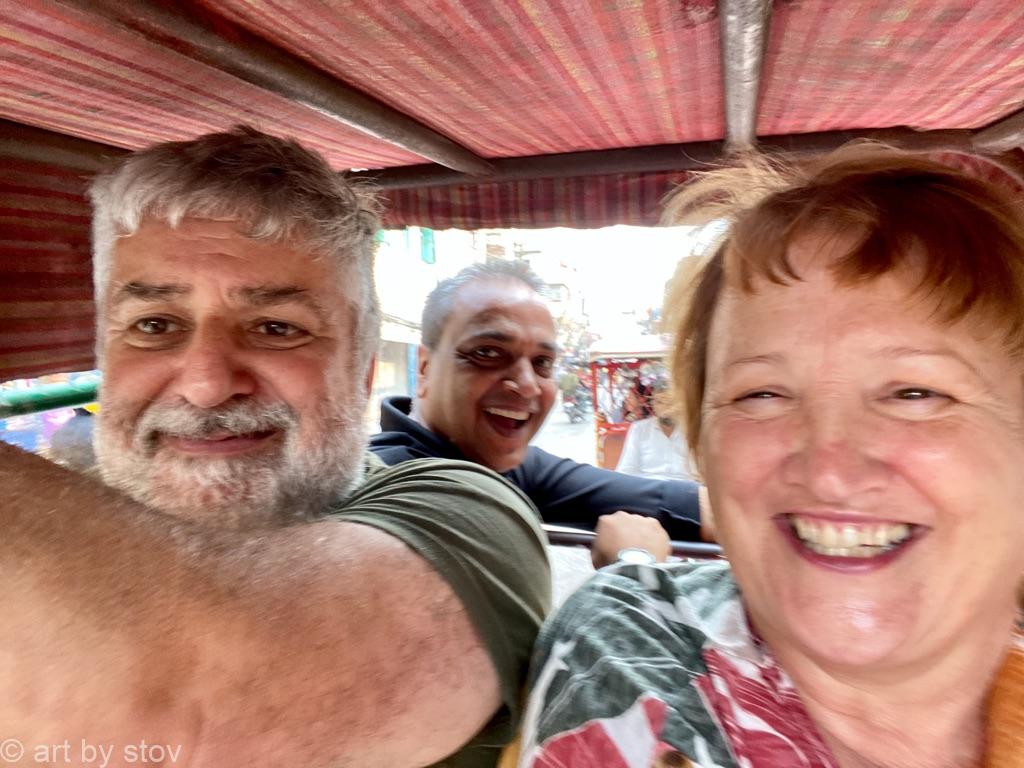
As we walked along we could see people walking with their dogs, these we were told are Hindu. The Muslims keep Goats and chicken. We caught a cycle rickshaw. How that man, who could have weighed no more than 8 or 9 stone, managed to move the three of us up the incline I have no idea.
Eventually we descended from the rickshaw and found that we were at the Khari Baoli spice market. This is the largest in the world with over 4,500 shops. We walked into a building and up a stairwell, surrounded by the smells of every kind of spice you can imagine. When we reached the roof Vivian took us to a vantage point where we could see the inside of what was apparently originally one large haveli; it was enormous and in the middle, where the mughal gardens complete with fountains playing had once been a small village had been built. The whole Haveli area was now called the Gadodia spice market.
I looked out across the dwellings in the middle and on the roof of one was a man doing his daily ablutions. He had several large jugs full of water and soap. He rinsed himself and then applied soap all over. Once fully lathered up he rinsed himself from the second jug and then dried himself and commenced dressing. Vivian explained that you will not see a bath in a typical Indian house. Indians think the Western custom of filling a tub with water, then sitting in it as it became soapy is unclean…I can see his point. Showers are better and failing that the two jugs method looked pretty effective. At no point did the bather get naked, this is frowned upon in India. There is a very funny part in the novel Shantaram by Gregory David Roberts where the main character, a foreigner strips naked and then is lambasted by his Indian friend and told that under a mans underpants must be a pair of Under underpants. When washing one must retain the under underpants but one can remove the over underpants. Once washed one wraps a dhoti, a loin cloth, around oneself and this enables you to remove the moist under underpants and replace them with dry over underpants.
Before we left our viewing platform we walked to the other side of the building and over the courtyard of the Fatehpuri Masjid mosque we had a view up the whole length of the Chandni Chowk to the red fort glistening in the distance. The Chandni Chowk (Moonlight bazaar), one of the oldest and busiest in Old Delhi. It was built in the 17th century by Mughal Emperor Shah Jahan and the two tree lined sides were once divided by a canal to reflect the moonlight.
A little further down the Chandni Chowk we entered the flower market. In a large room upstairs were piles of flowers. The ones which were covered up were those that had been sold. Mostly they were marigolds, but a pile at the entrance was entirely red roses. The owner gave The ever lovely a flower as she entered with a most exquisite perfume. To the right and sprawling out onto the balcony were two men busily threading Marigolds onto strings. We were told that they were for a wedding the next weekend. Behind them was a large state of the art cold room which was already crammed with hundreds of streams of yellow and gold. The ever lovely and I were reminded of the engagement party at the Guleria Kothi in Varanasi (See blog 7) with the same flower garlands ,we could picture the wedding scene.
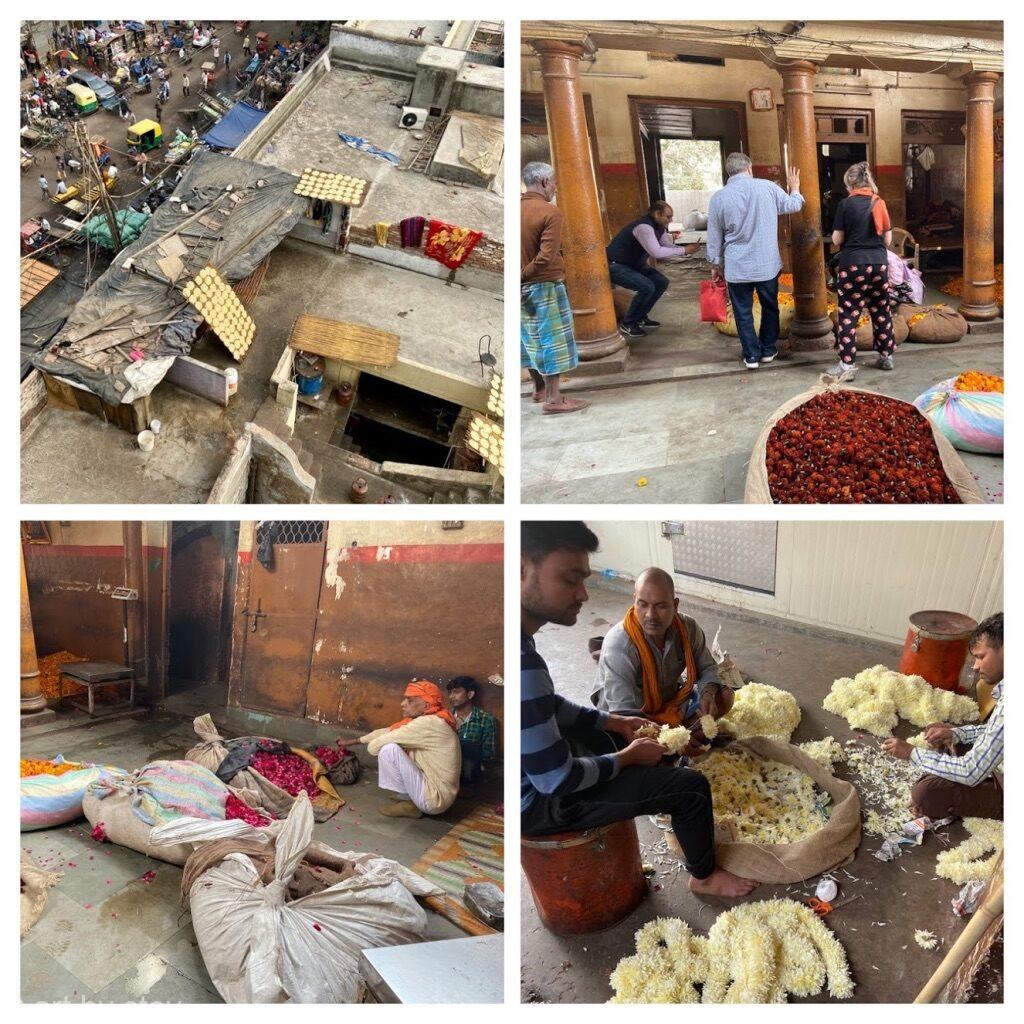
From the roof of the Flower market we could look down onto the roofs of the shops. On one roof there were huge racks covered with discs of bread drying in the sun. These are the chapattis which will go with dinner tonight. The lady who made them sat on the roof to guard them from the mischievous macaques.
We left the flower market and headed down a side street where Vivian took us into a wonderful lassi bar. Lassi is a yoghurt drink either sweetened or served with salt. Normally with food I prefer a salty lassi. But this came sweet and was a great refresher. The milk was from buffalo and was so rich and creamy. It was served in the traditional clay beaker. When you finished drinking the beaker went into a bin. It was then taken away, washed, dried and crushed to be made into new vessels. A century old recycling process.
At the corner of a building was a small alcove that looked like a fortune tellers booth from a fair. This is where the water provider used to sit. The water delivery service described earlier is a relatively recent thing. In olden times anyone with a need for water went to the booth and acquired a small quantity.
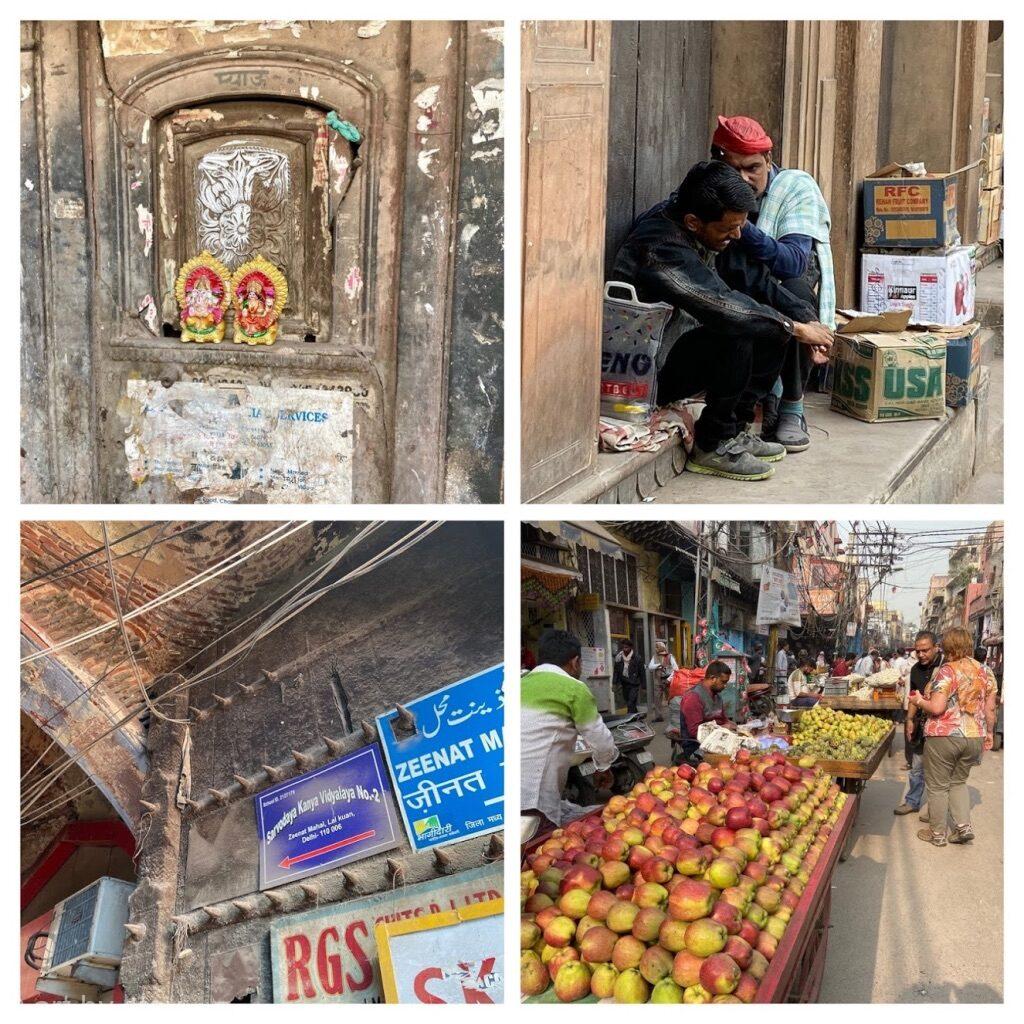
We carried on walking and Vivian paused. He said that on the steps behind us was a traditional Old Delhi ear picker. The residents of Old Delhi love to have the ear wax removed by a man with what looked like a long pointed pair of tweezers. The services of the ear pickers are very much sought after.
We stopped by a rather unassuming, but wider than average opening. Vivian pointed out to us that on either side of the entrance into the yard were two large metal studded doors. These are what remains of the private haveli of Zeenast Mahal the favorite wife of the last emperor of India, Bahadhur Shah II. Emperor was a titular name only , there was no empire left he merely had direct control of Old Delhi itself. He did however have another three wives and fifty four children. The iron knobs on the doors were to deter the elephants from ramming down the doors when they were closed. Zeenat was not too popular and was suspected of poisoning Thomas Metcalfe the British Resident (representative of the East India Company) just before her being implicated in the Indian Mutiny. Both Bahadur and Zeenat were exiled to Rangoon in Burma, another part of British India, in 1858.
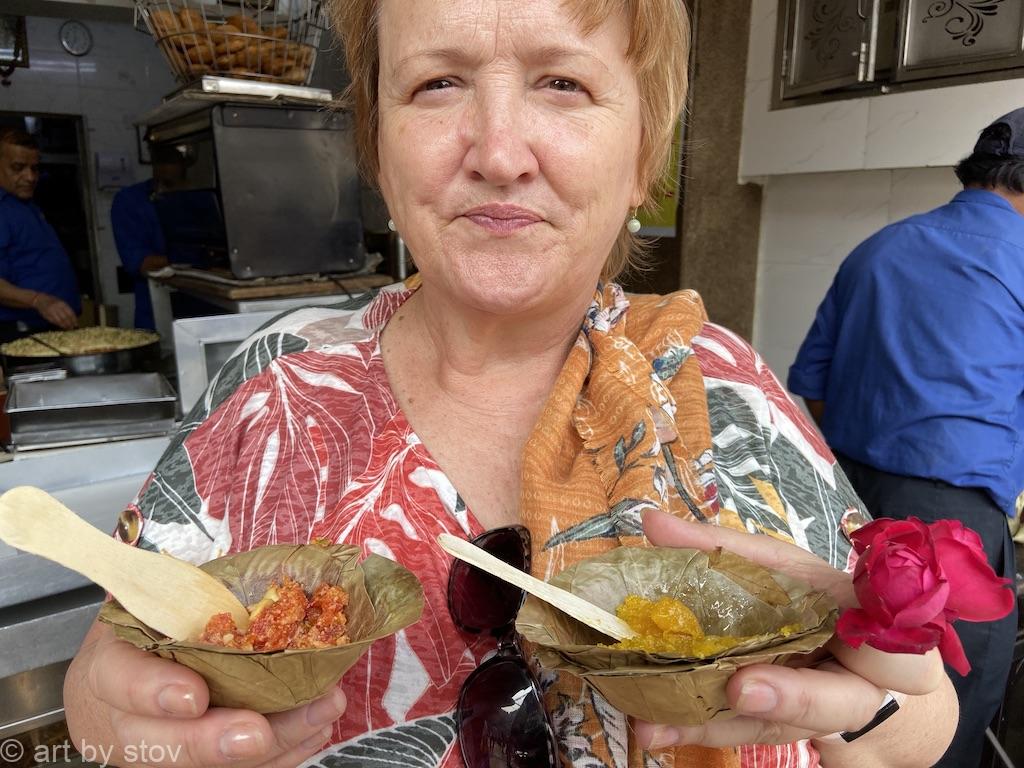
Vivian hailed an Auto Rickshaw and we drove down towards then end of our tour. But before we reached the Hauz Qazi Chowk crossroads we stopped at another stall, Churuwala’s which sold traditional Halva, nothing like the sesame sickly stuff we get over here but sweet, sticky, fragrant yum. Two flavours one based on carrots and the second lentils.
We walked slowly back to the station with Vivian who pointed out a vendor selling a special sweet dessert, cream based and very fluffy. This is only made once per year and sells like hotcakes.
Our tour at an end we promised to give a good review on Trip Advisor and also recommend Vivian to Sundowners as an alternative to their expensive commercial offering.
It is only 11:45 and we reflected on our already wonderful day. The ever lovely wished to get up close to the Lutyens government buildings at the end of the Raj Path. We caught the metro to Udyog Bhawan station and after calibrating our mental compass we found ourselves on a trajectory to the Raj Path, just at the point the first pools ended.
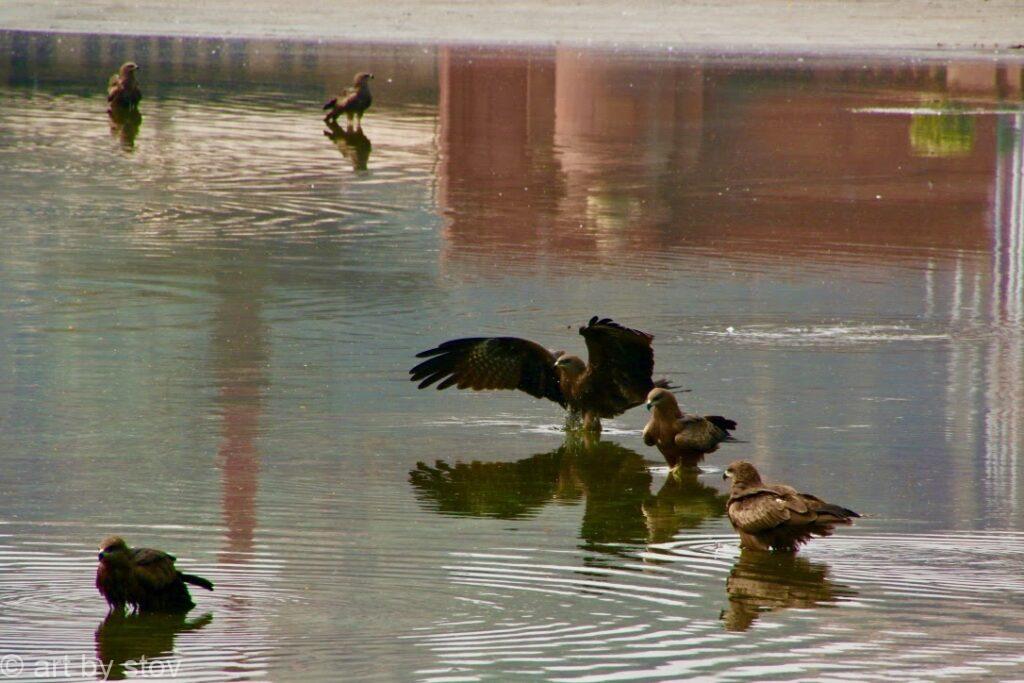
There was little water in the pools as it was the dry season. But that did not discourage the black kites who were there in their hundreds. Washing, resting, preening and doing some real black kite R&R. I was travelling light and could have attained some stunning close ups if I had my 600mm safari lens on. As it was I was really pleased with the 300mm efforts.
We turned left towards the Rashtrapati Bhavan (Presidential palace). It was getting hot and we were out in the noon day sun and baking. We were able to walk right up to the security gates which sit between the North and South block of Lutyens colossal edifices. They are truly magnificent and to think that they only served the Raj for some 20 years before independence! This is effectively Whitehall for the Indians, the North block contains the Ministry for home Affairs, State bank Of India, Ministry of finance, Central board of indirect taxes and a toilet. The South, the Ministry of defence, ministry of external affairs and the PMO? We weren’t quite sure what the PMO does, reviews on Google maps don’t help a lot either, one reviewer states “They wants keep shut off peoples mouth.” Mundanely, I have since learned it is the office of the Prime Minister; how disappointing!
Next stop we had an appointment with a bookseller. Metro or Auto Rickshaw? Just then a Auto Rickshaw pulled up as if by magic. Nice ten minute ride through Lutyens land. Khan Market is a renowned shopping mall near the Lodi Gardens. There are two branches of Bahrisons bookshop at the market supposedly. Initially we couldn’t find either. What we did find however was a pharmacy where I purchased some strepsils for my new ailment, a sore throat. We found the bookshop, purchased the Tiger book (See Blog 8) and headed outside to find a Auto Rickshaw back to the hotel. We had been on our feet since 06:00 and it was now nearing 14:00; we needed some R&R.
What a Auto Rickshaw ride! We had found a celebrity to drive us! He walked up to us and said he had the best Auto Rickshaw ride in the whole of Delhi and he was famous. As we moved off Suresh Kumar Sharma, regaled a tale about the poor air quality in Delhi and that Auto Rickshaw drivers are out in the air for 12 or more hours each day. There are over 30,000 deaths a year attributed to air pollution in Delhi alone. This caused eye and lung problems, his own lung capacity was at 50% of normal; he does not smoke. His stardom arose when a team from the Guardian newspaper strapped an air quality metre to his petrol Auto Rickshaw in 2017. 50 or below is a good reading, at noon it measured 172 and later in the evening rush hour over 500. The short term solution is a quality face mask which at 2000 rupees they cannot afford. The long term solution to move to electric Auto Rickshaws; Suresh had a new shiny electric auto rickshaw funded by his interview which can be viewed here https://www.theguardian.com/cities/video/2017/feb/13/how-bad-is-delhis-air-we-strapped-a-monitor-to-a-rickshaw-to-find-out
Our last planned trip was to the house which Mohandis K Gandhi has lived in for the last six months of his life. In the early months of independence having quelled the inter faith riots in Calcutta he moved to Delhi in late 1947 for the same purpose. Many refugees were pouring into Delhi from the Punjab causing inter racial strife. On 30th January 1948 Gandhi left his simple accommodation for his evening aarti (prayer).
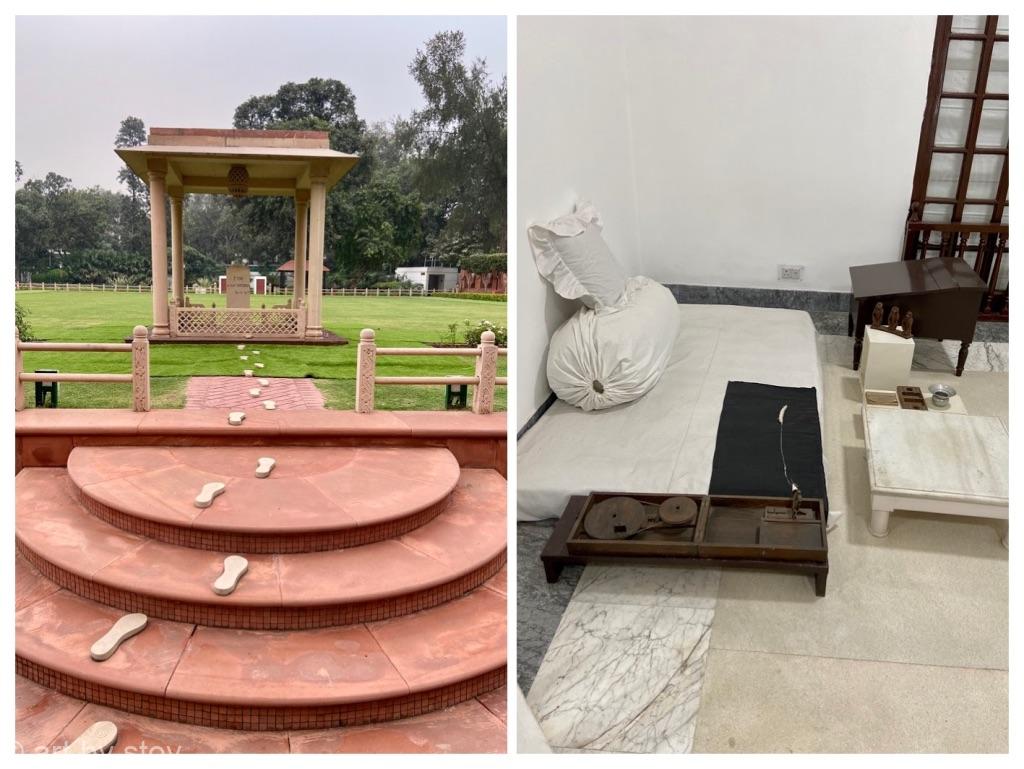
As he stepped onto the lawn a few paces from his place of prayer a Hindu nationalist shot him dead. The extremist Hindu Mashasabha believed that India should be declared a Hindu state and not a secular one as Gandhi supported. This pilgrimage seemed a fitting end to this, our latest trip to India, our having visited the incredibly peaceful Raj Ghat site where he was cremated and his ashes lie on our first trip in 2015. Quite a sobering experience and well worth a visit.
Back at The Claridges we hit the vodka bar, Aura, for a relaxing drink and reflection on our two days in India’s capital. We had come along way in time starting as we passed by the site of Mehrauli, the first Delhi onto Tughlakabad the fourth, into the Muslim sultanate Lodhi period and on to Mughal Shajahanabad. Now we were in a 5 star hotel built in 1952 after the end of the British Raj but situated in the heart of Lutyens Raj Delhi. Our three or four drinks here cost as much as a whole meal anywhere else on our trip. Bombay Sapphire and tonic for the lady and beer for me. We hadn’t realized quite how hungry we had become and demolished the generous bowls of snacks which came with every round. We felt quite tiddley as we headed back to the room to get ready for dinner.
Dinner back in Pickwicks, I was too tired to record what we had but I think I returned to the mutton curry. Our waiter Narendra told us he came from Uttarakhand and his village bordered the non core area of the Jim Corbett National Park and Tiger reserve. We got to talk about tigers and he told us that his pet cow had been killed by a tiger. Apparently in Uttarakhand the Government doesn’t reimburse the villagers for the loss of their livestock as they do in Madhya Pradesh. “Close off their kits so they don’t get to make the bandies anymore” he explained which quite puzzled me. The ever lovely and ever intelligent later deciphered this to mean “cut off their balls so they don’t have babies”.
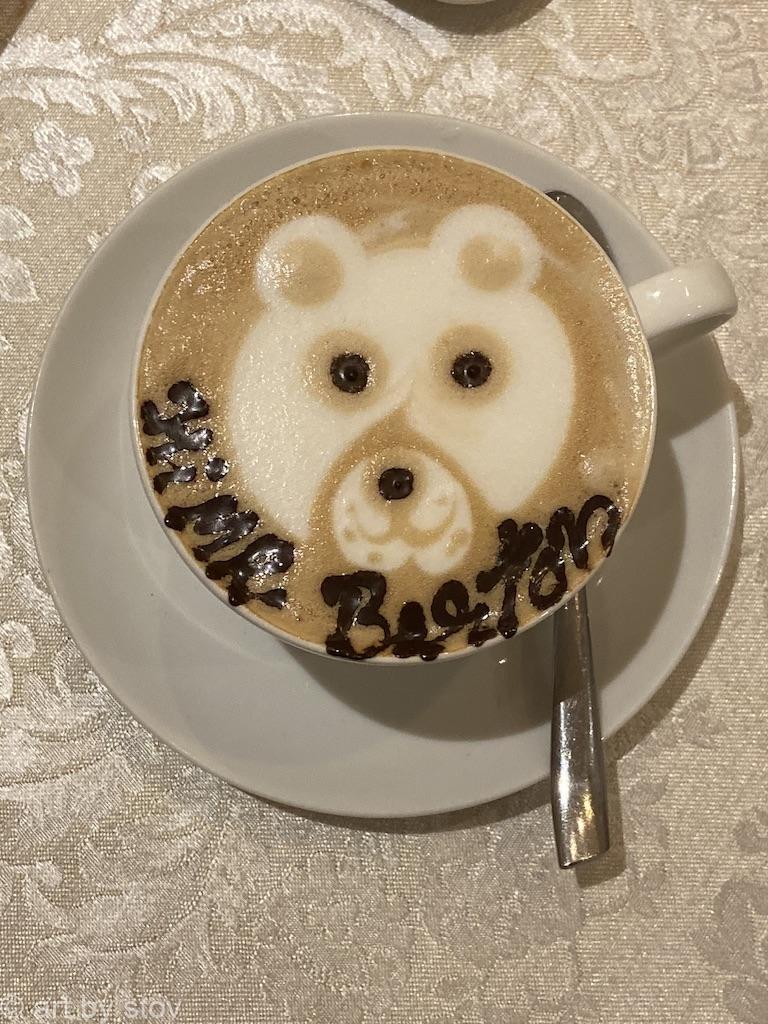
The ever lovely had dessert and I chose to have coffee. Narendra took ages getting my coffee but came back with the most wonderful drink on which was drawn a bear and the words “Mr Barton” I didn’t have the heart to put him right. I asked Narendra how often he saw his family. He said that he lived in a dorm at the back of the hotel and had one day off every three months so he did not see his family.
Back in the room we sorted the packing, had a quick bath and were asleep by midnight. This is effectively the end of my blog of our India 2019 tour. Next week, for the completists, I will list the wildlife sightings we had enjoyed.
Join me next week if you are interested in the full list of wildlife sightings on this trip if you choose not to, thank you for travelling India with me. Join me on another trip soon!
